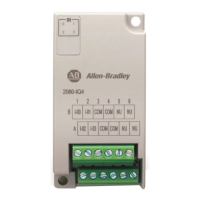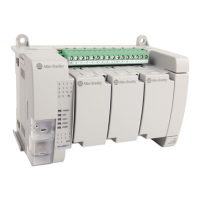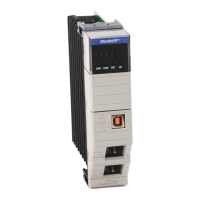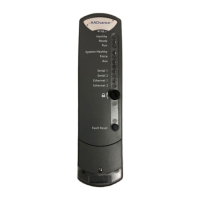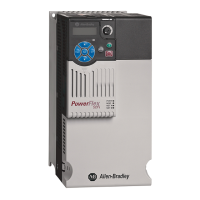10-6 Troubleshooting
1560D-UM051D-EN-P – February 2005
Fault Identification (cont.)
Table 10.E
Miscellaneous Situations
Display Possible Causes Possible Solutions
Motor current and
voltage fluctuates with
steady load
• Motor
• Erratic load
• Verify type of motor as a standard squirrel cage
induction motor
• Check load conditions
Erratic operation
• Loose connections
• Shut off all power to controller and check for loose
connections
Accelerates too fast
• Starting time
• Initial torque
• Current limit setting
• Kickstart
• Increase starting time
• Lower initial torque setting
• Decrease current limit setting
• Lower kickstart time to turn off
Accelerates too slow
• Starting time
• Initial torque
• Current limit setting
• Kickstart
• Decrease starting time
• Increase initial torque setting
• Increase current limit setting
• Increase kickstart time to turn off
Motor stops too quickly
with Soft Stop option
• Time setting
• Verify the programmed stopping time and correct if
necessary
Motor stops too slowly
with Soft Stop option
• Stopping time setting
• Misapplication
• Verify the programmed stopping time and correct if
necessary
• The Soft Stop option is intended to extend the
stopping time for loads that stop suddenly when
power is removed from the motor.
Fluid surges with
pumps still occur with
Soft Stop option
• Misapplication • Soft Stop ramps voltage down over a set period of
time. In the case of pumps, the voltage may drop too
rapidly to prevent surges. A closed loop system such
as Pump Control would be more appropriately suited.
• Refer to Publication 150-911
Motor overheats
• Duty cycle • Preset Slow Speed option: Extended operation at
slow speeds reduces motor cooling efficiency.
Consult manufacturer for motor limitations.
• Smart Motor Braking option: Check duty cycle.
Consult Motor manufacturer for motor limitations.
Motor short circuit
• Winding fault • Identify fault and correct
• Check for shorted SCR; replace if necessary
• Ensure power terminals are secure.
Note: For Pump Stop issues, refer to Application Considerations on page 1-13.

